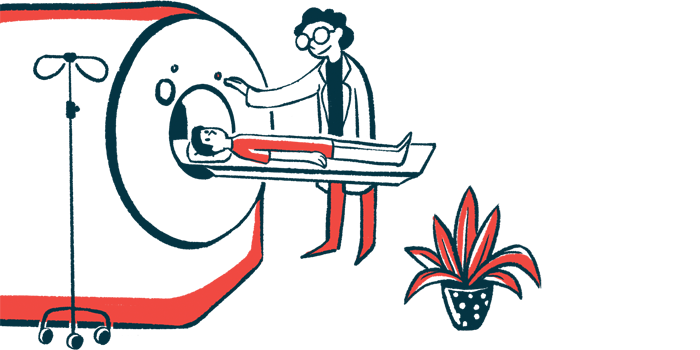Fat Buildup in Large Muscle of Lower Leg May Signal FAP Progression

Fat accumulation in the soleus muscle, a large muscle of the lower leg, may be indicative of disease progression in people with hereditary transthyretin (ATTRv) amyloidosis, a group of conditions that includes familial amyloid polyneuropathy (FAP), a small study in China suggests.
The study, “Skeletal Muscle Involvement Pattern of Hereditary Transthyretin Amyloidosis: A Study Based on Muscle MRI,” was published in the journal Frontiers in Neurology.
FAP is caused by mutations in the TTR gene that lead to the accumulation of an abnormal version of a protein called transthyretin in multiple tissues, particularly in the peripheral nerves, which are those located outside the brain and spinal cord. In some patients, muscles can also be affected.
Muscle MRI is a common way of assessing muscle function in people with neuromuscular disorders. In these patients, “muscle MRI can help determine the level of denervation [loss of nerve supply] by documenting the pattern of muscle atrophy [shrinkage] and fatty infiltration,” the researchers wrote.
Scientists at Peking University First Hospital evaluated the diagnostic potential of muscle MRI in a group of ATTRv patients.
Data covering 20 ATTRv amyloidosis patients, with a mean age 44.2, who were followed at their hospital between July 2020 and August 2021 were analyzed.
Impairments in peripheral nerve function were found in all these people. Eighteen also had weakness in their lower limbs.
All were positive for mutations in the TTR gene, with five patients carrying the Val30Met mutation, the most common disease-causing mutation in FAP.
Muscle MRI was used to evaluate calf muscles in all 20 patients and thigh muscles in 16 of them.
Analysis revealed that the back of the thighs, where the hamstring muscles are located, as well as calf muscles contained large amounts of fatty tissue. Calf muscles had the highest level of fat, with the soleus muscle — a large muscle on the back of the lower leg — having the highest fatty content. Three patients, however, had more fatty tissue infiltration in thigh muscles.
Researchers then explored possible correlations between fatty tissue accumulation and clinical disease measures. They found that fat accumulation in the back of calf muscles associated with muscle weakness. This correlation, however, was not seen for thigh muscles.
Fat infiltration in calf muscles also was significantly associated with impaired strength of the ankle plantar flexion muscles, and poorer responses of the tibial nerve, which provides innervation to the muscles of the lower leg and foot.
These findings suggest that fat infiltration occurs in a selective manner in ATTRv patients, particularly affecting posterior calf muscles.
“Fatty infiltration of the soleus muscle might be a marker of progression of ATTRv amyloidosis,” the team wrote.







